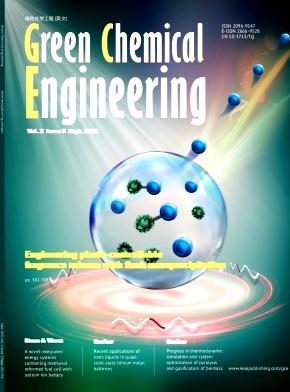Physics-informed machine learning to predict solvatochromic parameters of designer solvents with case studies in CO2 and lignin dissolution
IF 9.1
Q1 ENGINEERING, CHEMICAL
引用次数: 0
Abstract
The polarity of solvents plays a critical role in various research applications, particularly in their solubilities. Polarity is conveniently characterized by the Kamlet-Taft parameters that is, the hydrogen bonding acidity (α), the basicity (β), and the polarizability (π∗). Obtaining Kamlet-Taft parameters is very important for designer solvents, namely ionic liquids (ILs) and deep eutectic solvents (DESs). However, given the unlimited theoretical number of combinations of ionic pairs in ILs and hydrogen-bond donor/acceptor pairs in DESs, experimental determination of their Kamlet-Taft parameters is impractical. To address this, the present study developed two different machine learning (ML) algorithms to predict Kamlet-Taft parameters for designer solvents using quantum chemically derived input features. The ML models developed in the present study showed accurate predictions with high determination coefficient (R2) and low root mean square error (RMSE) values. Further, in the context of present interest in the circular bioeconomy, the relationship between the basicities and acidities of designer solvents and their ability to dissolve lignin and carbon dioxide (CO2) is discussed. Our method thus guides the design of effective solvents with optimal Kamlet-Taft parameter values dissolving and converting biomass and CO2 into valuable chemicals.

通过物理信息机器学习预测设计溶剂的溶解变色参数--二氧化碳和木质素溶解案例研究
溶剂的极性在各种研究应用中起着至关重要的作用,特别是在它们的溶解度方面。极性可以用kamlett - taft参数表征,即氢键酸度(α)、碱度(β)和极化率(π∗)。对于设计溶剂,即离子液体(ILs)和深共晶溶剂(DESs),获得Kamlet-Taft参数是非常重要的。然而,考虑到离子对在ILs和氢键供体/受体对在DESs的无限理论数量的组合,他们的Kamlet-Taft参数的实验测定是不切实际的。为了解决这个问题,本研究开发了两种不同的机器学习(ML)算法,使用量子化学衍生的输入特征来预测设计溶剂的Kamlet-Taft参数。本研究建立的ML模型预测准确,具有较高的决定系数(R2)和较低的均方根误差(RMSE)值。此外,在目前对循环生物经济感兴趣的背景下,讨论了设计溶剂的碱度和酸度与其溶解木质素和二氧化碳(CO2)的能力之间的关系。因此,我们的方法指导设计具有最佳Kamlet-Taft参数值的有效溶剂,将生物质和CO2溶解并转化为有价值的化学物质。
本文章由计算机程序翻译,如有差异,请以英文原文为准。
求助全文
约1分钟内获得全文
求助全文
来源期刊

Green Chemical Engineering
Process Chemistry and Technology, Catalysis, Filtration and Separation
CiteScore
11.60
自引率
0.00%
发文量
58
审稿时长
51 days
 求助内容:
求助内容: 应助结果提醒方式:
应助结果提醒方式:


